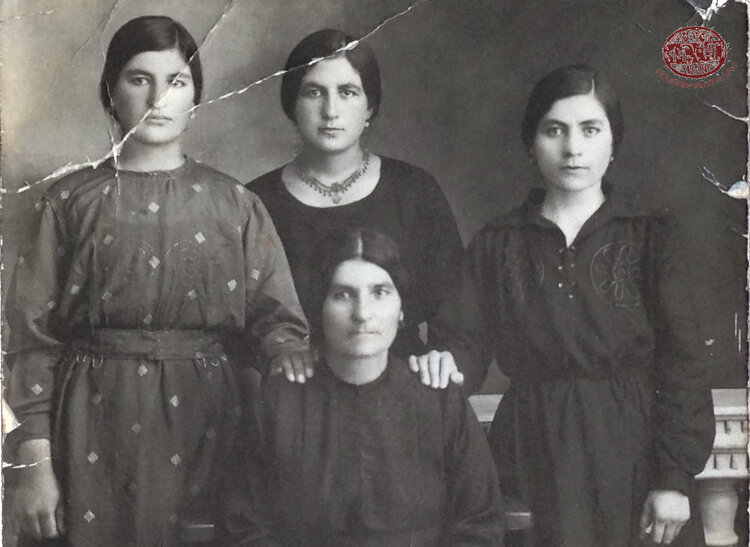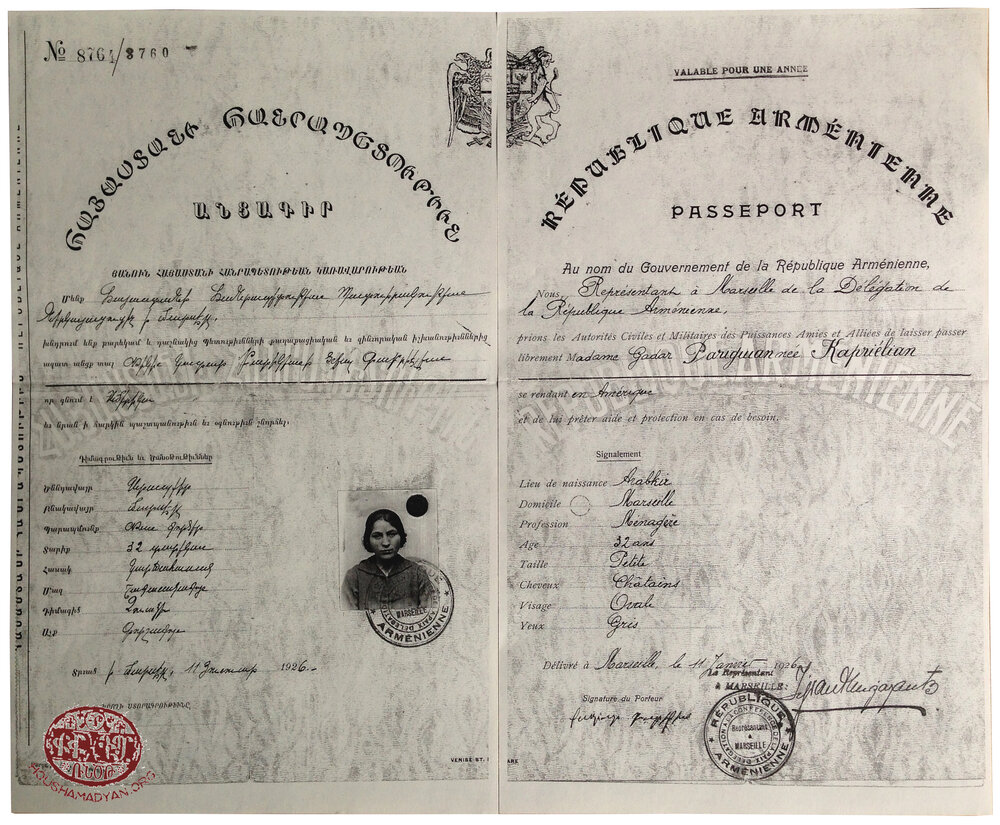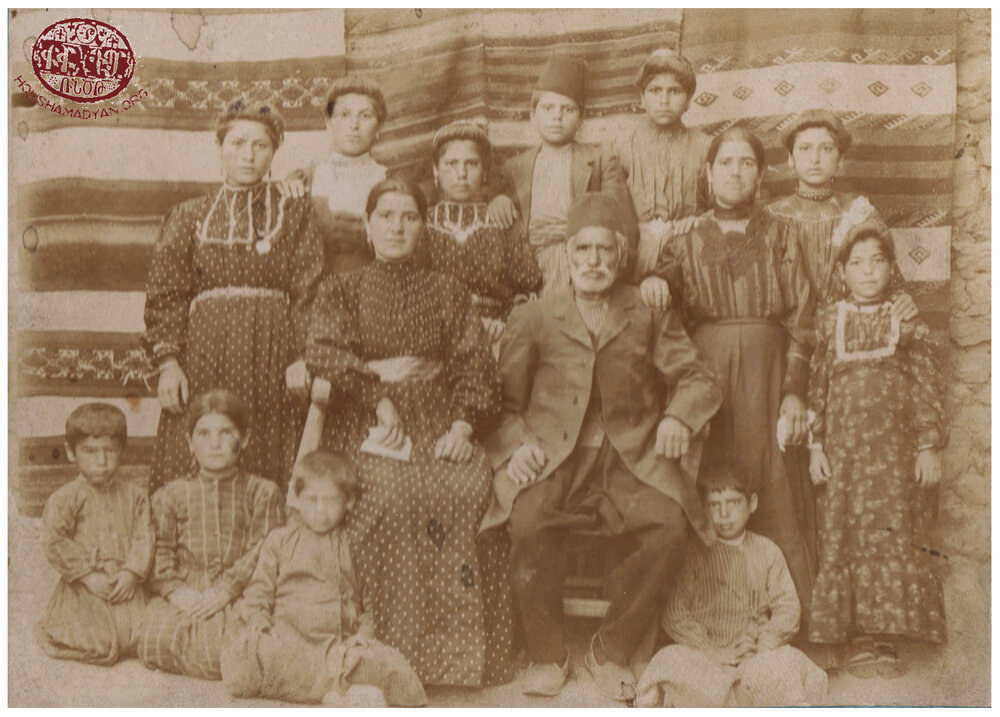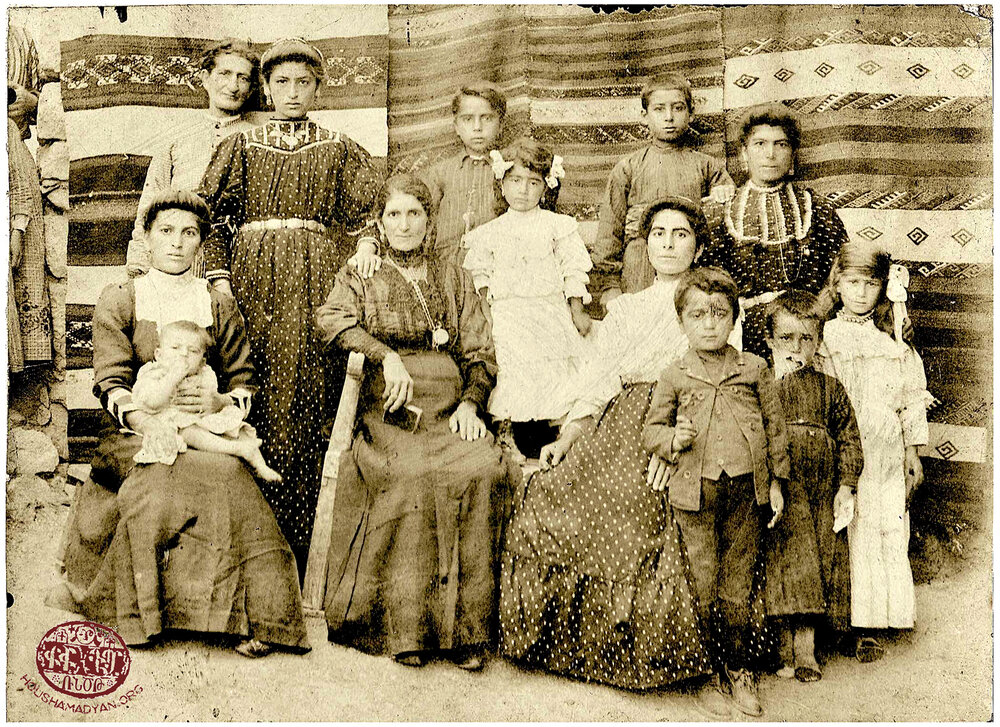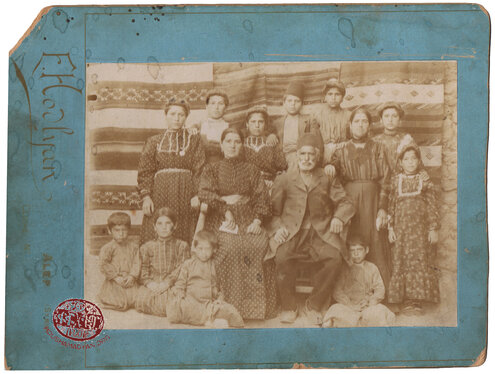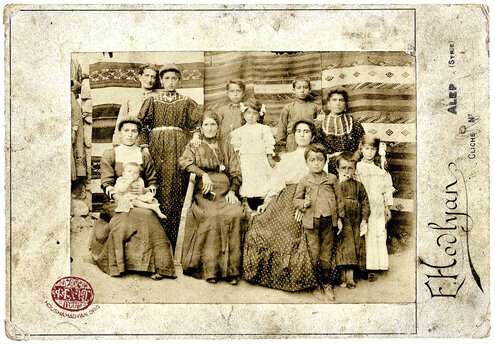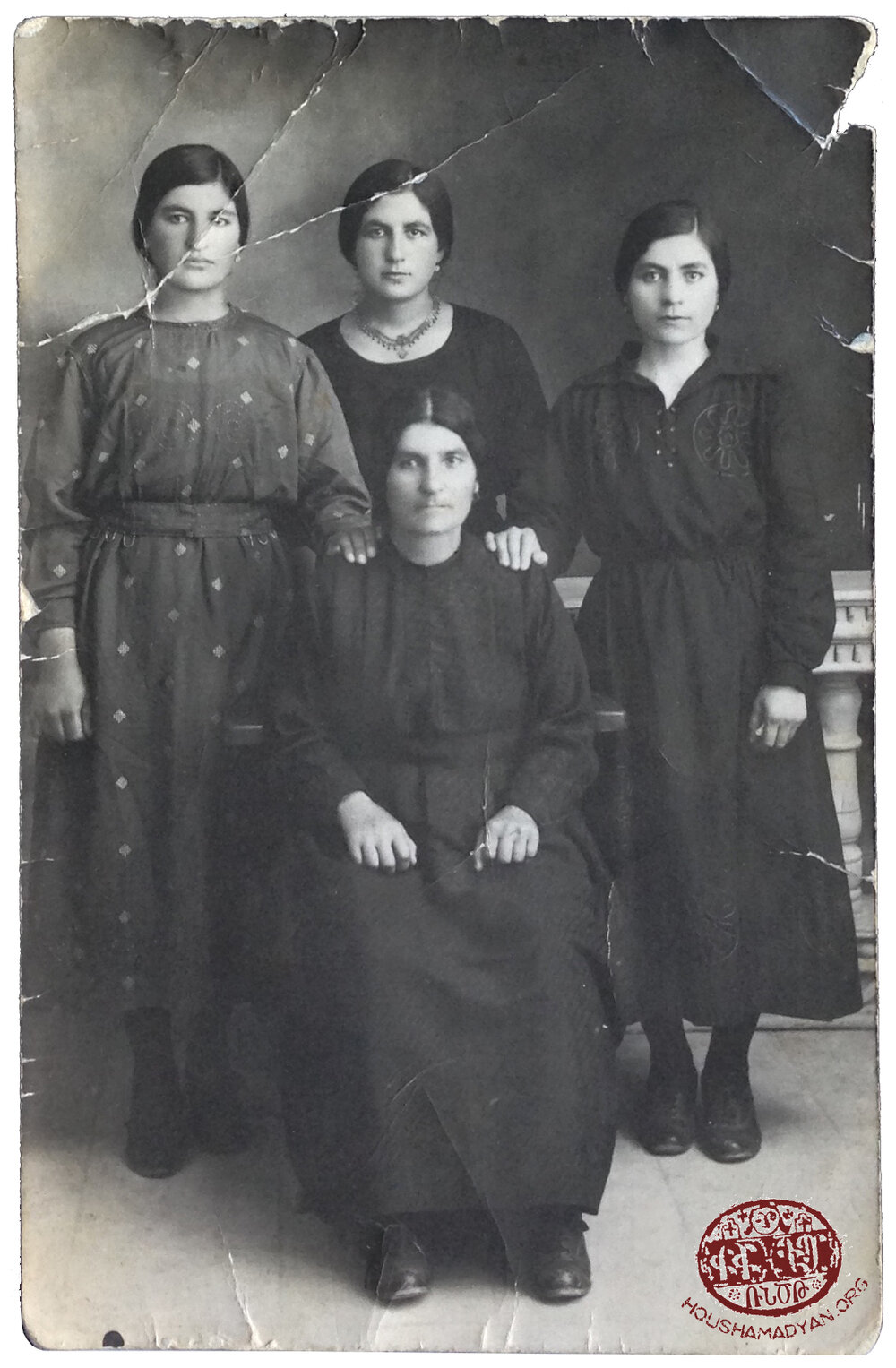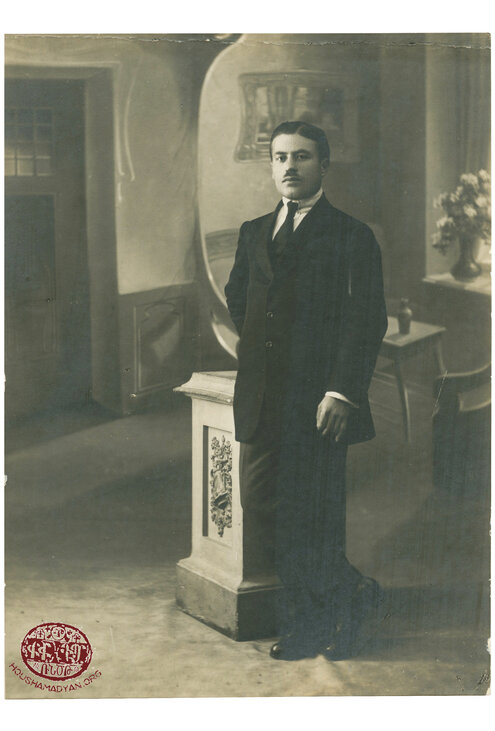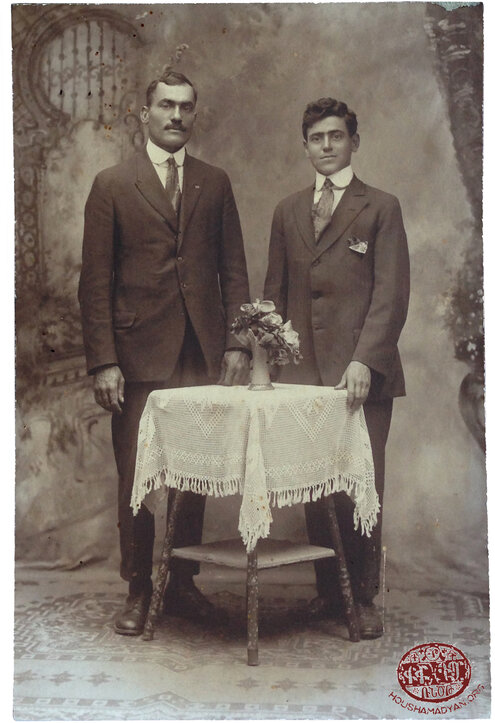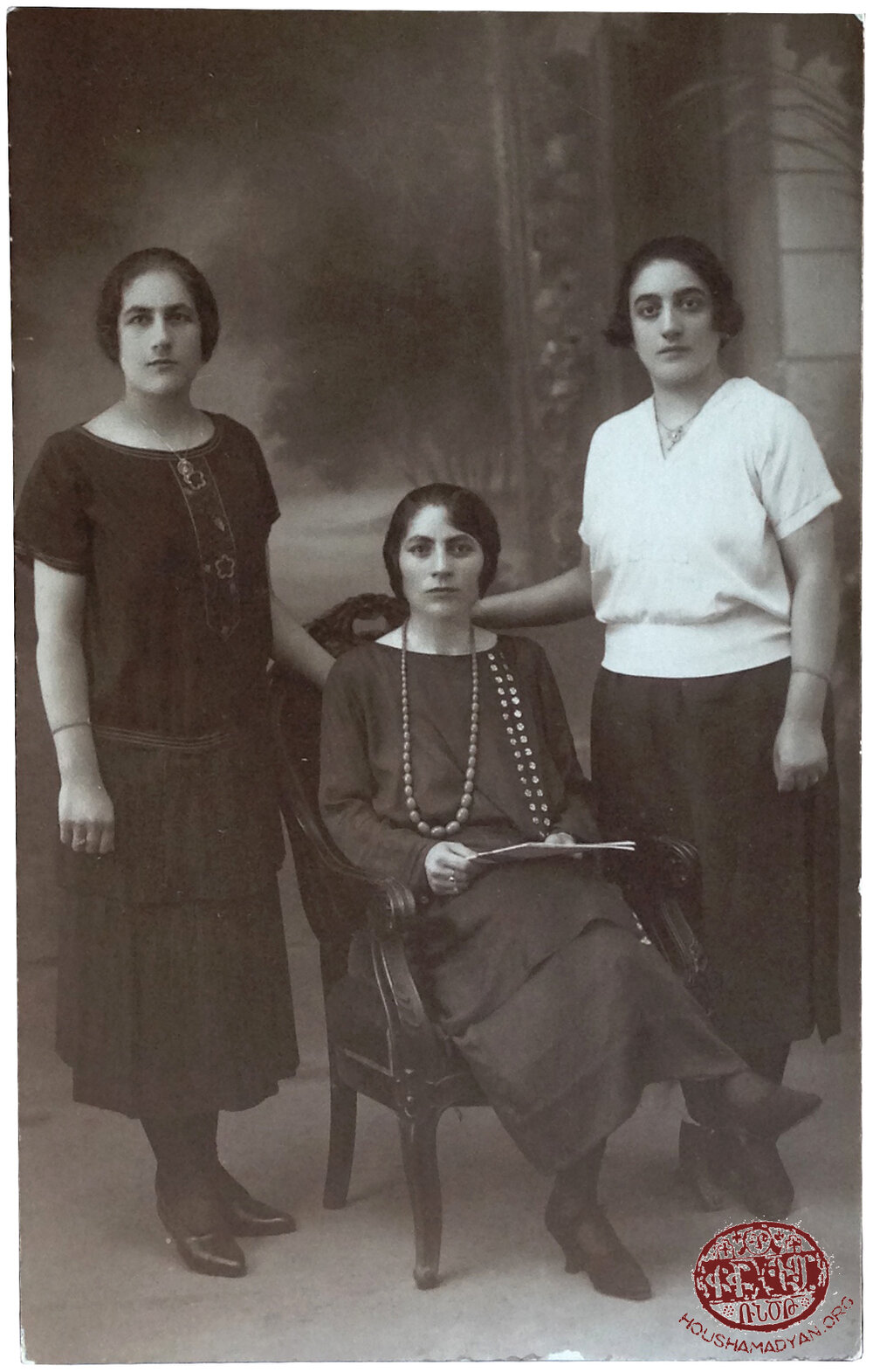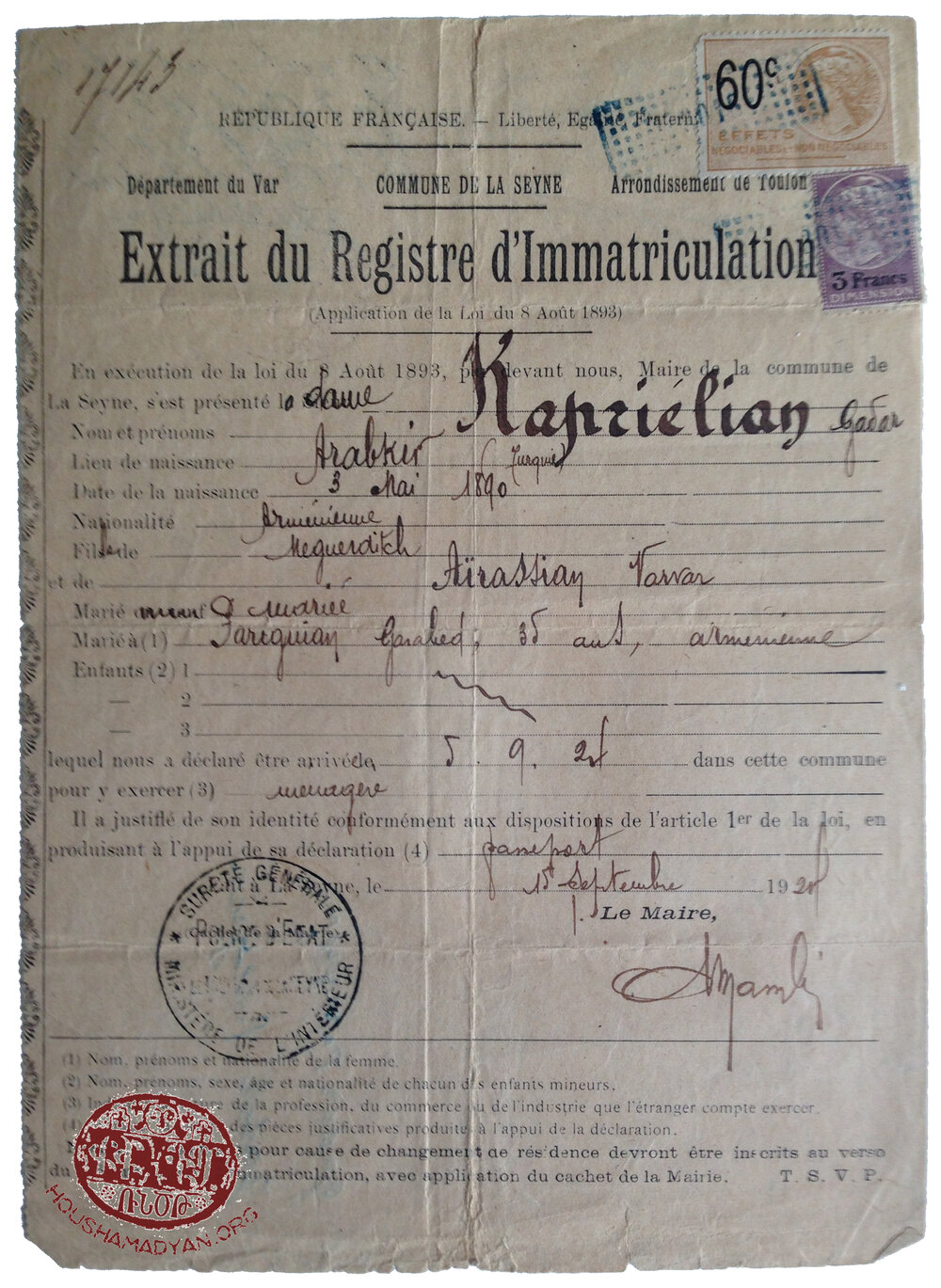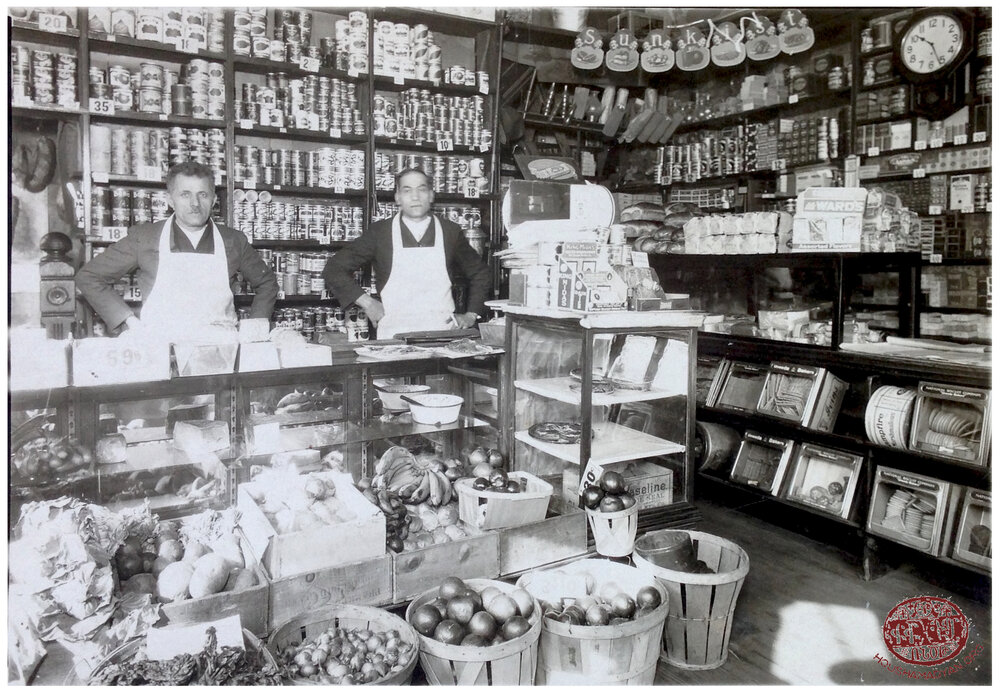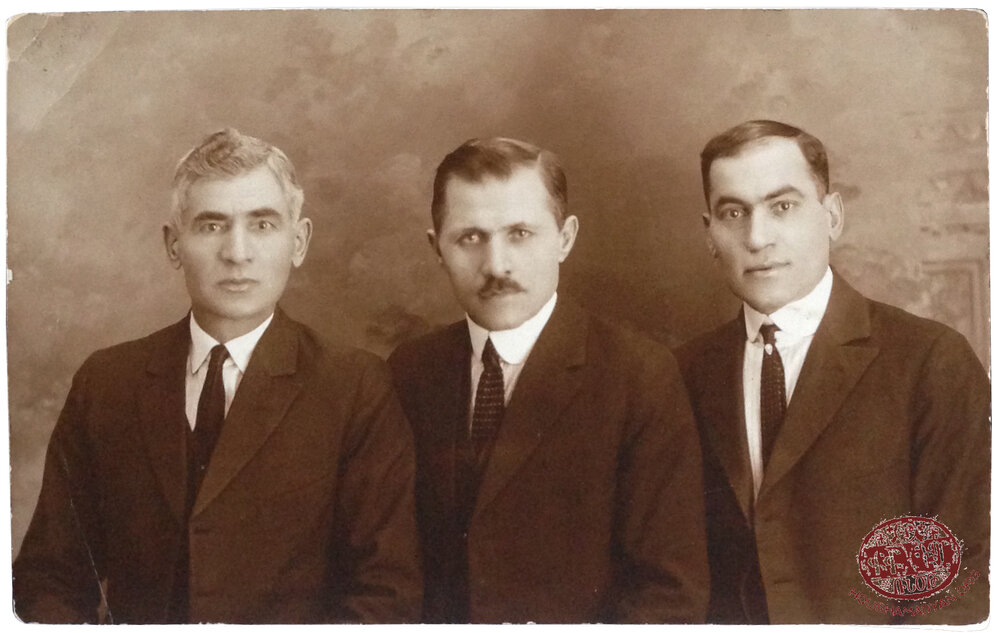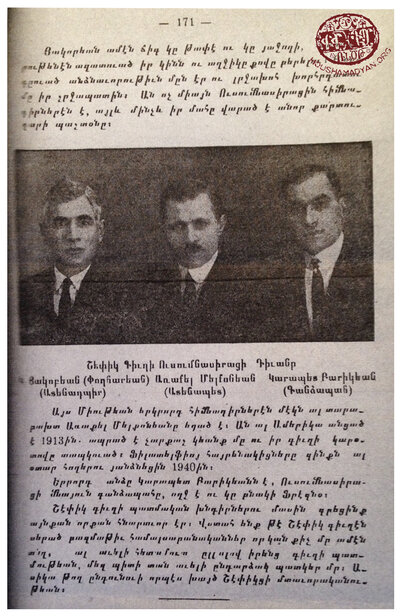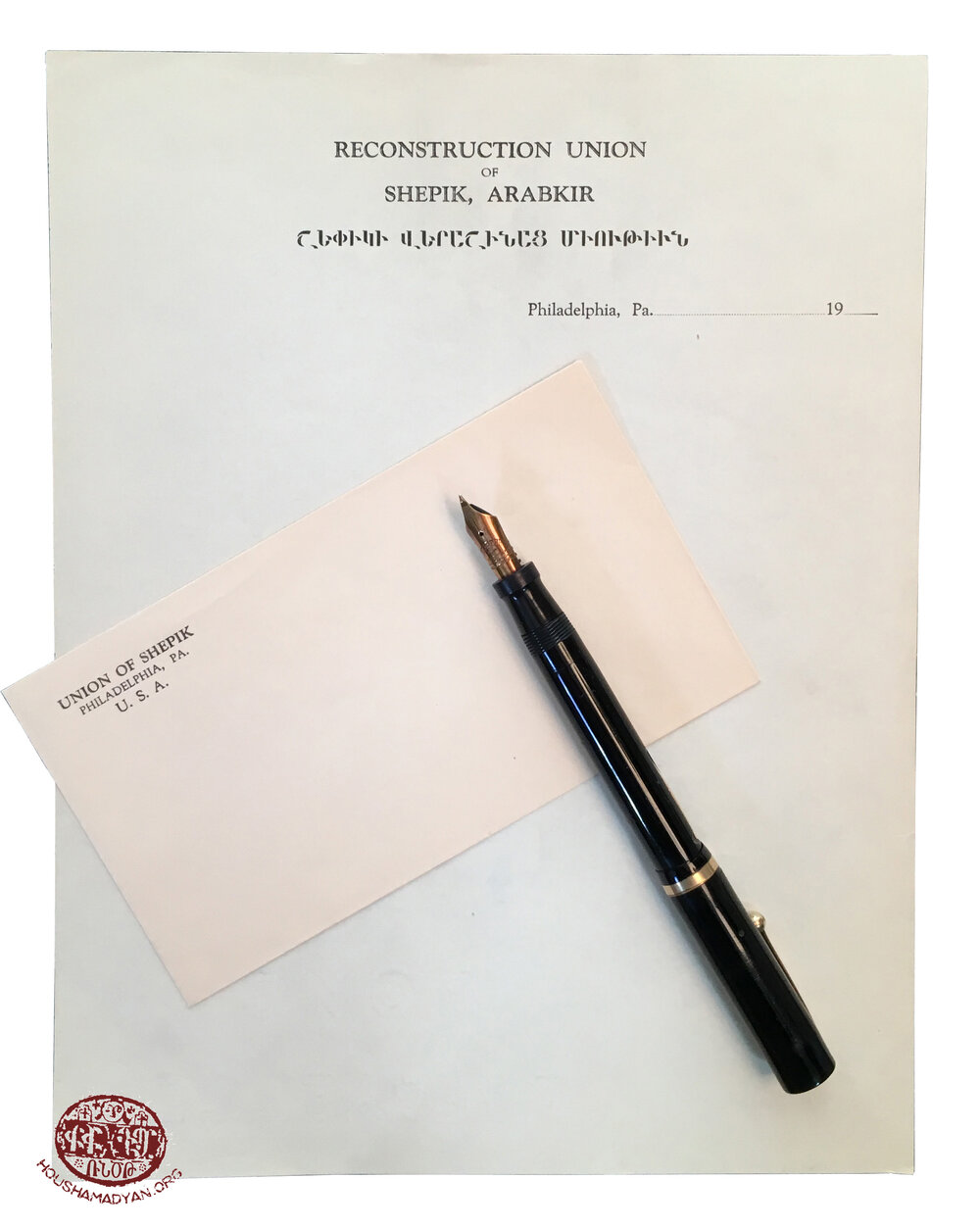Margaret Paregian Shaphren collection - Bellevue, WA, USA

Author: Todd Shaphren, 7 May 2018.
The family information, documents, and photographs, which tell the story of the Kaprielian and Paregian families, come from the Paregian sisters Margaret and Elizabeth, and conversations that Margaret’s husband, Bill, had with his mother-in-law Gadar Paregian (née Kaprielian).
Gadar Kaprielian and her future husband, Garabed Paregian, were both from the village of Shepig (present-day Yaylacık) near Arapgir in the province of Mamuret-el-Aziz. Family lore says that Gadar was born in May 1895, but some documents from her time in France show the years 1894 and 1890. Garabed was born in May 1888.
Both Gadar and Garabed came from large families in which their fathers had remarried after the deaths of their first wives. Gadar’s mother, Varvar Airassian, had died shortly after having twins, and Garabed’s mother, Elizabeth Khadian, had died after she was hit on the head around the time of the Hamidian massacres (1895).
Through her mother, Gadar was related to the Airassians. Simon Airassian was said to have made a large fortune in Istanbul and returned to his native village, Shepig, where he helped his fellow Armenians buy the land from the Turks [We know that in various Armenian-populated areas, the local leaders (Turkish or Kurdish beys and aghas) had managed to take ownership of the Armenian villagers' arable lands; the Armenian peasant would continue to cultivate the land but was obliged to give a big percentage of the crop to the land owner. This situation somewhat improved after 1908, when Armenians bought the lands from the beys and aghas, which were taken from them, and as such became land owners again].
Gadar’s father, Migirdich Kaprielian, and Garabed’s father, Abraham Paregian, both had many siblings. Some Paregians are known to have lived in Dzag, a village to the southeast of Shepig, and Istanbul, while some of the Kaprielians were from Kharpert/Harput.
Garabed and Gadar were married in December 1910 by the village priest, Father Baghdasar Barasatian. A year later, Garabed left for America leaving Gadar to stay with his parents in Shepig. Garabed settled in Philadelphia, a popular destination for Armenians from Arapgir and Mamuret-el-Aziz. As with most, young Armenian immigrants, he took laborer jobs in the beginning. At some point during WWI, he worked in shipbuilding as evidenced by his "War Service Ship Building" pin.
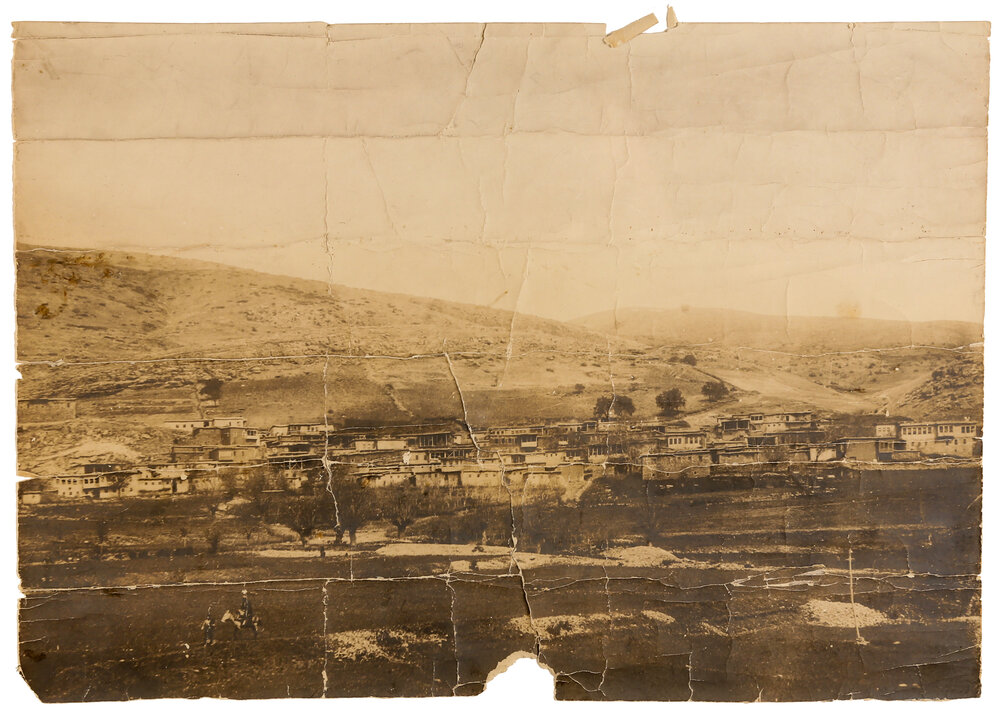
The Genocide reached Shepig in late June 1915. It is believed that Gadar left in the deportations that started from that area on July 5th. She survived the journey south; the only survivor from her immediate family and her husband’s immediate family with the exception of her half-sister Vartanoush, though the two were separated.
It is believed that Gadar ended up in the area around Ourfa. An Arab woman nursed her back to health. After that, she spent time in several Kurdish and Turkish households until the war ended in 1918.
Garabed was joined in Philadelphia by his brother Mardiros and his first cousins Shahen and Hagop (Samuelian) before the Genocide. Gadar’s brother, Benjamin, traveled to the Balkans during this time and settled in Trstenik (present-day Serbia).
It was not uncommon for Armenian immigrants to establish compatriot associations dedicated to assisting the villages back home. Garabed, Arakel Melkonian, and Garabed Pogaharian formed the Union of Shepig just before WWI, we believe. This association sent money to Shepig to support the school. Garabed was the treasurer, Arakel the president, and Garabed Pogaharian the secretary.
After the war, the name was changed to the Reconstruction Union of Shepig. It is likely that efforts were made to locate Genocide survivors from Shepig and to provide assistance to them. Beginning in the mid to late 1920s, the Union of Arapgir undertook to develop Nor Arapgir outside of Yerevan, Armenia. The Reconstruction Union of Shepig provided $3,000 to build several residential buildings in a sub-district called Nor Shepig (New Shepig).
In the mid-1960s, long after most members had died and all activity had ceased, Garabed donated the remaining funds of the Reconstruction Union of Shepig to the Union of Arapgir to assist with the publication of Poladian's History of the Armenians of Arapgir (Antranig L. Poladian, Պատմութիւն հայոց Արաբկիրի [History of the Armenians of Arapgir], New York, Baykar Press, published by the Arapgir Association of America, 1969, 1019pp).

We do not know for sure what happened to Gadar in the immediate aftermath of WWI. She may have returned to the Arapgir area for a short time. She was back in Ourfa by 1920 and had reached Aleppo by 1923. At some point, she was reunited with her half-sister, Vartanoush, as they are together in a photo taken in 1923 in Aleppo (displayed on this page). By late 1924, Gadar traveled to Marseille via Beirut.
While in France, she probably stayed with relatives. In one photograph, she is with Louise Paregian, her husband’s first cousin. Louise’s father, Krikor Paregian, and mother, Vergine, had 5 sons (Antranig, Parounag, Samuel, Hagop, and Hovhannes), as well. Krikor was the oldest of Garabed’s uncles and had an important business in Istanbul that, no doubt, helped the family survive the Genocide. They traveled back and forth to France, and it is believed that Vergine died in France.
It is a mystery as to how and when Garabed learned that his wife had survived the Genocide, though his work with the Reconstruction Union of Shepig may have helped. He applied for citizenship in 1922 and became an American in 1924. By that time, he did know that Gadar was alive, and he traveled to France in the spring of 1925 to see her for the first time since December 1911.
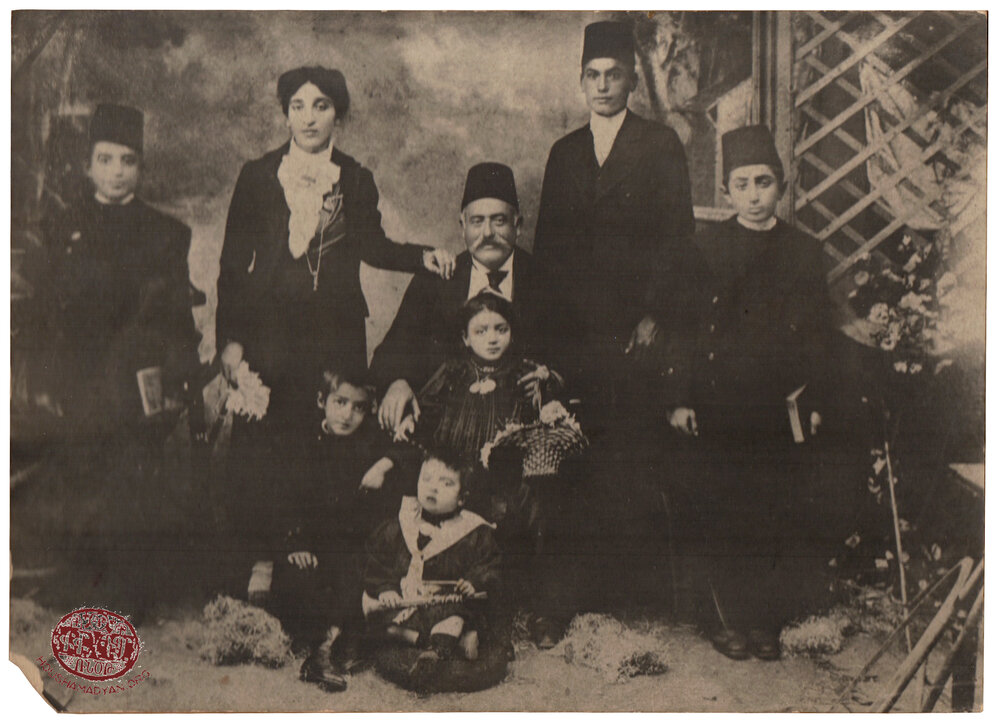
• He is shown in Istanbul in his paternal uncle's household.
• It is circa 1900 and we believe he is about 12 years old.
• He had been sent to Istanbul for schooling.
• His uncle Krikor and Vergine had 1 daughter (Louise) and 5 sons (Antranig, Parounag, Samuel, Hagop, and Hovhannes).
• Krikor is said to have owned a bakery in Istanbul that supplied bread to Ottoman army officers.
• Krikor is said to have survived the Genocide and died naturally in Turkey.
• Vergine, Louise, Hagop, and Hovhannes are known to have lived in France after WWI.
• Vergine died in France.
The people in the photograph from left to right are: Krikor's son, Vergine (Krikor’s second wife), Krikor Paregian (Garabed’s paternal uncle), Garabed Paregian (my grandfather), and Krikor's son. In front: Krikor’s son, Louise (Krikor's daughter) in Krikor’s lap, and Krikor’s son.
The United States tightened immigration after WWI, and it became very difficult to qualify under the quota system. The fact that Gadar was now the spouse of an American citizen provided a way around the quota. It was not until January 1926 that she satisfied all of the formalities to receive her visa from the American consulate in Marseille. She used a newly issued passport from the Republic of Armenia as her official document despite the fact that government had ceased to exist several years earlier. It seems that this was one recognized method by which “stateless” Armenians could obtain travel papers.
Garabed had joined with his good friend, Arakel Melkonian, in a grocery business in the early 1920s. Gadar joined them in the house on Oxford Street in early 1926. Arakel’s wife, Markrid, immigrated in late 1926.
Garabed and Gadar had 2 daughters, Elizabeth (named after Garabed’s mother) and Margaret (named after his older sister). They moved to another house on Oxford Street in the late 1920s, and then moved to a different part of Philadelphia in the early 1930s. There, they established their own corner grocery store, which they operated very successfully until 1945 when they moved to Fresno, CA.
Garabed passed away in 1973. Gadar, the survivor, lived until 1991.

This is a copy of my grandmother, Gadar (Kaprielian) Paregian's passport from 1926.
• My grandmother reached France in September 1924.
• My grandfather visited her in the spring of 1925.
• By January 1926, she had all of her clearances and approvals to travel to America.
She used this passport from the First Republic as her travel document later that month.
This photographs depicts Gadar Kaprielian (later Paregian) with members of the Paregian family.
Standing from left to right are: Gadar Paregian, Vartanoush Maloomian, Khatoun Paregian, Lucy, Hagop, Elizabeth, Hoosqui (Isgouhi?), Shnorhig Airassian, and Arshalouys. The man sitting on the right is Apraham Paregian. The third child from the left is Barnog and at Aprahams feet on the right is Oskyon (Vosgian?).
This is another photograph taken on the same day. This is not part of my collection photograph; it is remarkable that I found a distant cousin and we shared photographs taken at the same time with some of the same family members in 1913. My cousin’s mother is the little girl in the middle of the photo with the bows in her hair.
This photo is from Jean Simon Khazarian's collection, France.
Here are details:
• This photograph was taken by the same photographer as the photograph above.
• It was probably taken on the same day in Shepig given that the background and some of the clothes are exactly the same.
• Thus, the photograph is from 1913.
• This is the Airassian family.
• Mariam Airassian was the only daughter of Simon Airassian. He is mentioned briefly in the short family history.
• Mariam was married to Melkon Mikaelian. My grandmother (Gadar Paregian [née Kaprielian]) was related to both the Airassians and the Mikaelians.
• Mariam and Melkon used the Airassian name, because her father was so prominent in the village.
• Dr. Eliza Melkon, another of their daughters, is not pictured, as she had already immigrated to America. She became the first female Armenian physician in the United States.
Standing from left to right are: identity unknown, Shnorhig Melkon (née Airassian) - the daughter of Mariam, Minas Boghossian - son of Aroussiag, Varsenig Khazarian (née Boghossian) - daughter of Aroussiag, Bedros Baghdassarian - son of Verkin, Verkin Baghdassarian - daughter of Mariam. Sitting from left to right are: Vartanoush Maloomian (née Airassian) - daughter of Mariam, sitting on her lap is: most probably Jirair Maloomian - son of Vatanoush, Mariam Airassian, Aroussiag Boghossian (née Airassian) - daughter of Mariam. The small children in the front row, from left to right: Melkon Boghossian - son of Aroussiag, Melkon Baghdassarian - son of Verkin and Berdjouhi Tatossian (née Baghdassarian) - daughter of Verkin.

This is a photo of my grandmother, Gadar (née Kaprielian) Paregian and her half sister Vartanoush.
• It is dated 1923.
• She was in Aleppo from 1923 to 1924.
• This is the first photograph we have of her after the 1915 Genocide.
• She is with her half-sister, Vartanoush. They became separated during the deportations, however they were reunited at some point.
• The names of the other 2 women are unknown.
Vartanoush Kaprielian is standing second from the left, standing next to her, third from left is Gadar Kaprielian (later Paregian).
1. This is a photograph of my grandmother's brother, Benjamin Kaprielian, from 1921.
• He was born around 1890 in Shepig.
• He left the Ottoman Empire in 1911 and ended up in the Balkans.
• He lived in Trstenik in the former Yugoslavia (present-day Serbia).
He was married and had a son and daughter.
2. A photo of my grandfather Garabed Paregian and uncle Shahen in Philadelphia.
• My grandfather, Garabed Paregian, was born in Shepig in 1888.
• My grandmother, Gadar (Kaprielian) Paregian was born in Shepig in 1894 or 1895, though one document says 1890.
• My grandparents were married in Shepig in December 1910.
• My grandfather went to America at the end of 1911 and settled in Philadelphia.
• My grandmother stayed with her in-laws in Shepig, as was customary.
• My grandfather's brother, Mardiros Paregian, and first cousin, Shahen Paregian, came to Philadelphia shortly after him.
Here are the people in the photograph, which was taken in Philadelphia pre-1920:
From left to right: Garabed Paregian and Shahen Paregian.
A photograph of Vartanoush (Gadar's half-sister), grandmother Gadar (née Kaprielian), and Louise Paregian.
• My grandmother traveled from Aleppo to Toulon (probably via Beirut) and stayed in Marseille from sometime in 1924 to early 1926.
• This photograph was taken during her stay in France.
• She is with my grandfather's first cousin, Louise Paregian, who lived in France.
Standing from left to right are: Vartanoush Kaprielian and Lousie Paregian, sitting in the middle is: Gadar Paregian.

This is a photo of my grandfather, Charles Paregian, and Arakel Melkonian in their grocery store on Oxford Street in Philadelphia.
• This photo is circa mid-1920s.
• He was partners with Arakel Melkonian in the business.
• In the 1930's, he moved his family to another part of Philadelphia and owned his own grocery store.
From left to right are: Arakel Melkonian and Charles Paregian.

The co-founders of the Union of Shepig.
This is a photo of my grandfather, Garabed Paregian, and the other founders of the Union of Shepig.
• The Union of Shepig was founded in Philadelphia in the years just before WWI, we believe.
• The co-founders were Arakel Melkonian (President), Garabed Paregian (Treasurer), and Garabed Pogaharian (Secretary). Source: Sarkis Bakhtigian (editor), Ոսկեգետակ [Vosgekedag (Golden River)], Yearbook, Beirut, 1948.
• In the early years, this compatriot organization supported the school in Shepig.
• After the war, the name was changed to the Reconstruction Union of Shepig. It is likely that efforts were made to locate Genocide survivors from Shepig and to provide assistance to them, though we have no record of this.
• In the mid to late 1920s, the Union of Arapgir undertook to develop Nor Arapgir outside of Yerevan. The Reconstruction Union of Shepig provided $3,000 to build several residential buildings in a sub-district called Nor Shepig. Source: M. Bedrossian, New Arapgir - historic and statistical information; new information about the district constructed near Yerevan (with illustrations and maps), Cairo, 1937.
• Long after most members had died and all activity had ceased, my grandfather donated the remaining funds of the Reconstruction Union of Shepig to the Union of Arapgir to assist with the publication of Poladian's History of the Armenians of Arapgir. Source: Poladian, History of the Armenians of Arapgir, Part XIV, Chapter 3.
From left to right are: Garabed Hagop Pogaharian (changed to Charles Hagopian when he became an American citizen), Arakel Melkonian, and Garabed (changed to Charles when he became an American citizen) Paregian.

